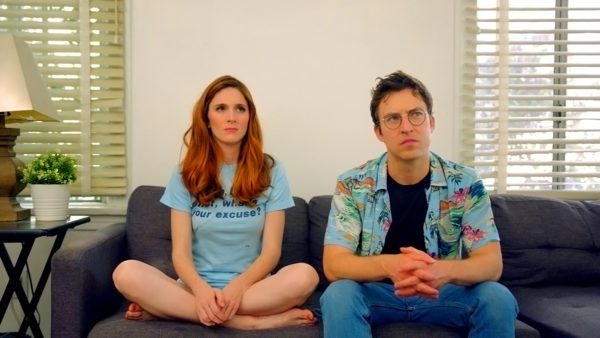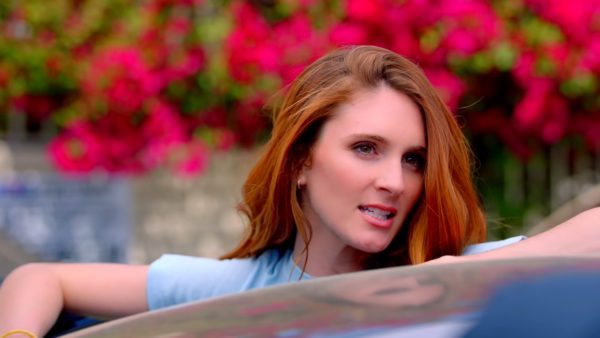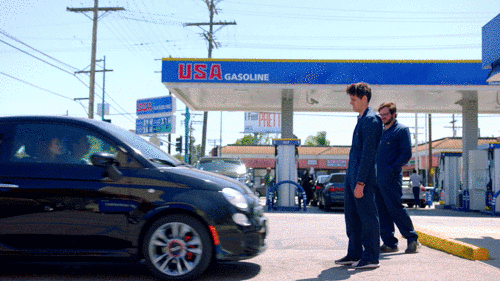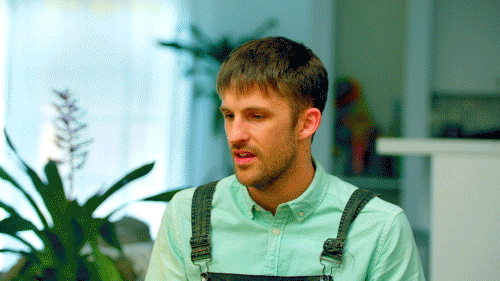Grandmother’s Gold, a movie by Brian Jordan Alvarez, who you might recognize from the season finale of the first new season of Will & Grace, recently made waves on the internet and in the film making world. The full-length comedy feature was released for free on YouTube, racking up over 100,000 views in under a week. Though the film covers over 25 different locations and 190 setups, the director of photography Jordan McKittrick used only two lenses: the Sigma 18-35mm F1.8 Art and the Sigma 50-100mm F1.8 Art lenses.

Jordan McKittrick shared some insight on how he shot an entire feature film with two lenses. There are some really epic shots in this movie, but also some super intimate ones.
How did you know only two Sigma lenses were going to work for all of the different moods you had to capture?
The great thing about shooting with these two lenses is they cover nearly the entire focal length between 18mm and 100mm. So whether it’s a claustrophobic shot from the inside of a huddle or a long shot of the cast walking through the Santa Monica Mountains, I’m covered. Another advantage to shooting with zoom lenses is, obviously, the ability to easily zoom in for closer coverage on a scene.

The constant aperture is a big bonus because I don’t lose light as I zoom in and thus I don’t have to adjust exposure and lights. Every opportunity to save time helps on a project where I we had over 25 locations in 8 days and I had no camera assistant to help me with lens swaps.

What was one of the most challenging scenes to shoot in Grandmother’s Gold?
The most challenging aspect of shooting this film was that I had to pull my own focus while I operated camera. Additionally, the director and I like the look of the Sigma lenses wide-open so we shot the whole film at an f/1.8. That made pulling focus quite a challenge. On top of that we were moving very quickly and I often only had two takes in which to nail the focus. By far the most challenging scene was when the two main actors are walking home from lunch. In this shot the actors are walking directly toward the stationary camera which required me to pull focus constantly to keep the actors sharp.

And what about the most enjoyable?
There’s one shot in the movie that involves a dolly whip pan that was a lot of fun to plan and shoot. The main actor enters the front door then we dolly back 12-feet and whip around to see Madeline stick her head into the hallway on the other side of the house. Then Danny sticks his head out from the kitchen and they meet in the hallway while he picks up the phone. It’s a slapstick-ey shot that was super fun to film. We were on a tight schedule so I only had two chances to nail the camera move. In the final edit the shot is cut up – but it was actually filmed in one go.

Why did you pair the Sigma lens with an Alexa Mini?
Pairing a versatile lens like the 18-35mm and the Alexa gives you a great shallow depth of field and a high dynamic range. The director wanted the film to have a very saturated color palette, and so filming the project on the Alexa enabled us to have a lot of flexibility when it came to color correction.

Before we started production we tested the Sigma lenses by filming a handful of sketches (click HERE to view) using the Sony Fs7 camera. We liked the look of the lens and so we decided to shoot Grandmother’s Gold on them!
What kind of lighting was available to you and how did it work with the Sigma?
The Sigmas open up to an f/1.8 which makes them a beautiful, budget friendly option for shooting low light. We needed to move very fast and so I packed light. All of the equipment I used to make the movie fit into my Toyota Prius. My lighting package included an Arri Fresnel kit (1k, 2x 650w, 300w) a 575w Leko, and a china ball. My grip package included six c-stands and a variety of bounce cards and flex-fills. Brian and I both appreciate the effect that the tungsten lights have on actor’s skin so we didn’t use any Kinos or LEDs on this shoot.

During the climax of the film there is a five-minute night scene which I lit using power generated by my Prius. I really enjoyed lighting a scene using automobile power. I specifically like the Prius because the gasoline engine automatically starts up in when the battery runs low. So I don’t have to worry about running the battery down. To film the scene we just parked the car about 200 feet away and ran extension cords to the tent location. Once again shooting at an f-stop of 1.8 was also very helpful.
What advice do you have for aspiring filmmakers who want to follow in your and Brian’s footsteps to create high quality content for the internet?
- Find strong actors and make friends with them. Acting involves a lot of rejection and there are thousands of actors looking for opportunities to work.
- Teach yourself how to edit (even if you only use iMovie). Trying to make a project without knowing how to edit yourself is akin to a sculptor working with someone else to mold the clay. Not only is it a challenge to communicate your ideas, but your ability to experiment and discover new ideas is impaired. A collaborative relationship between a director and an editor obviously has its benefits, but the most productive filmmakers I know have (at least some) familiarity with editing. Knowing how the story is told and seeing the cut in your head is a huge part of being a DP.
- And most importantly, make sure you finish projects – don’t just start them (I learned that one from Brian Jordan Alvarez).
Click HERE to watch the movie.
Sigma lenses Used for “Grandmother’s Gold”
Sigma 18-35mm F1.8 Art and the Sigma 50-100mm F1.8 Art lenses.


